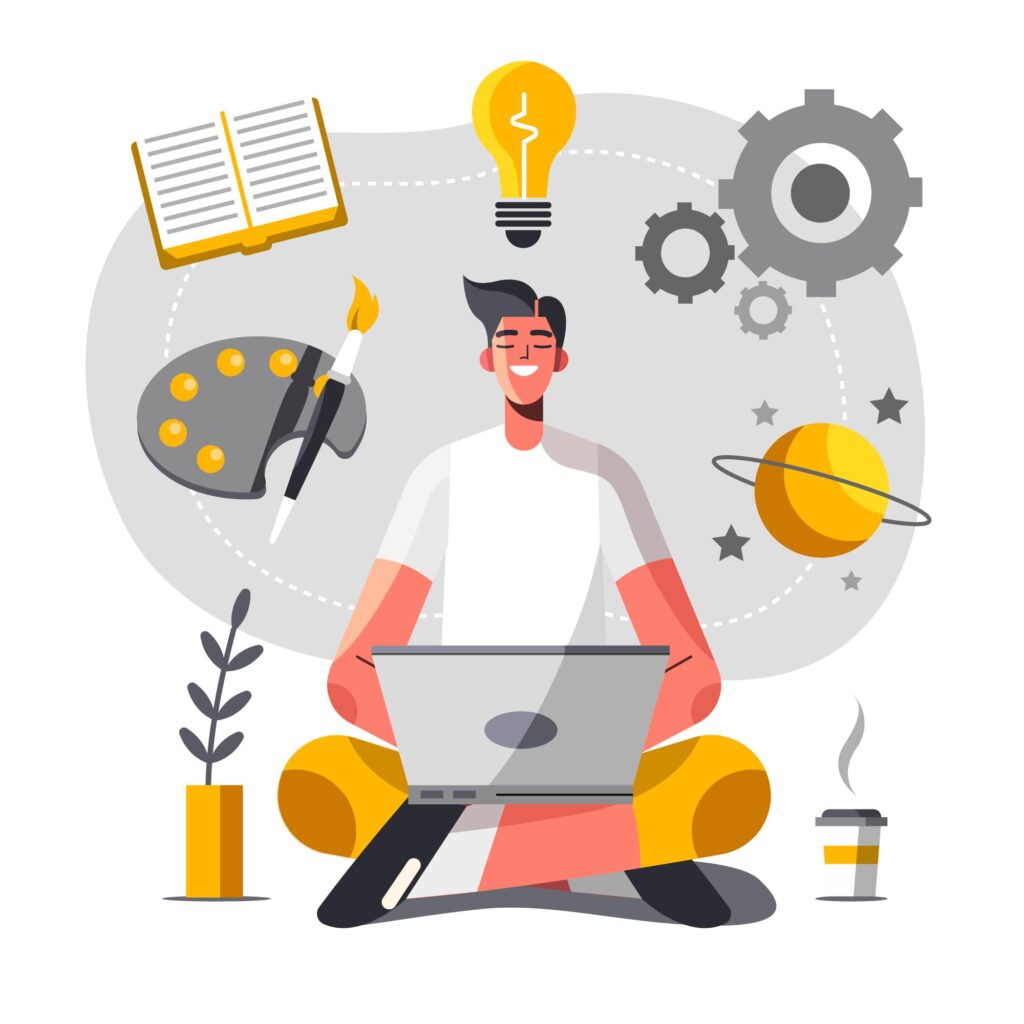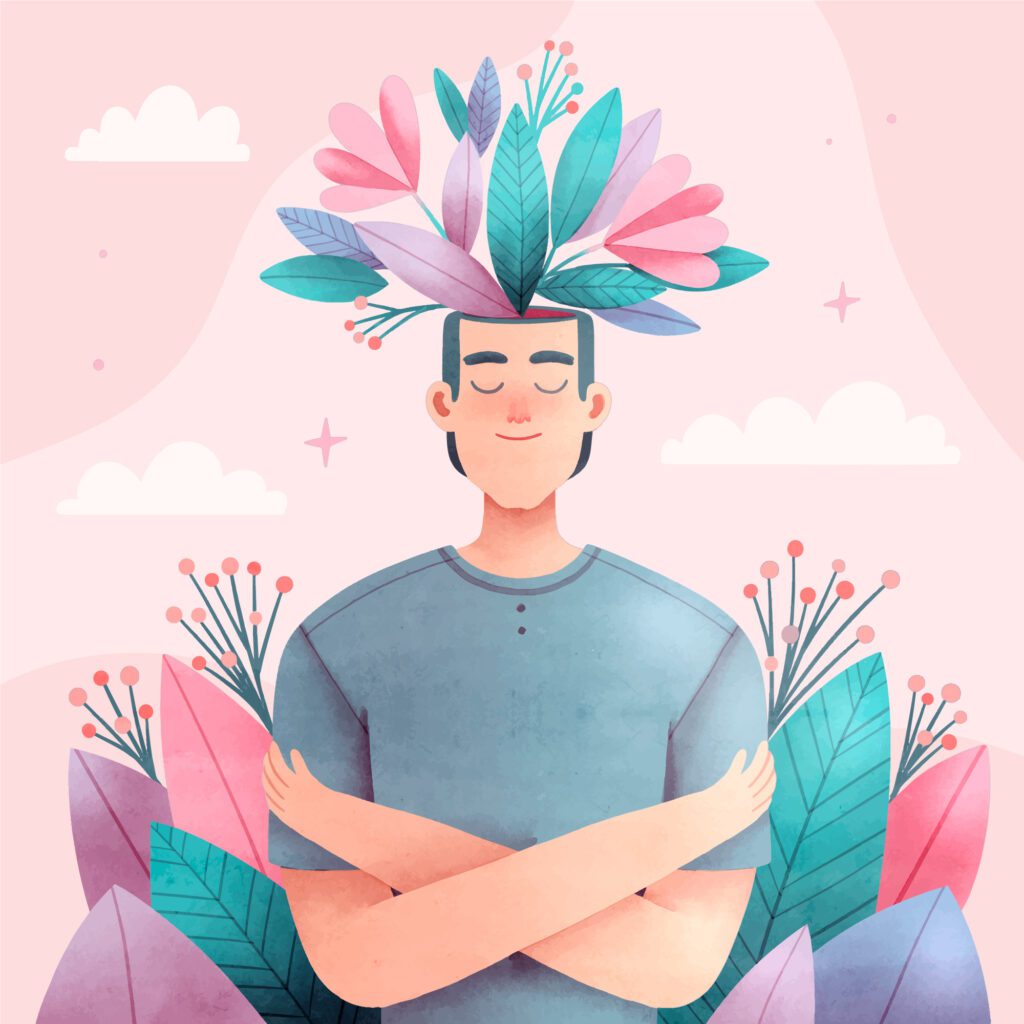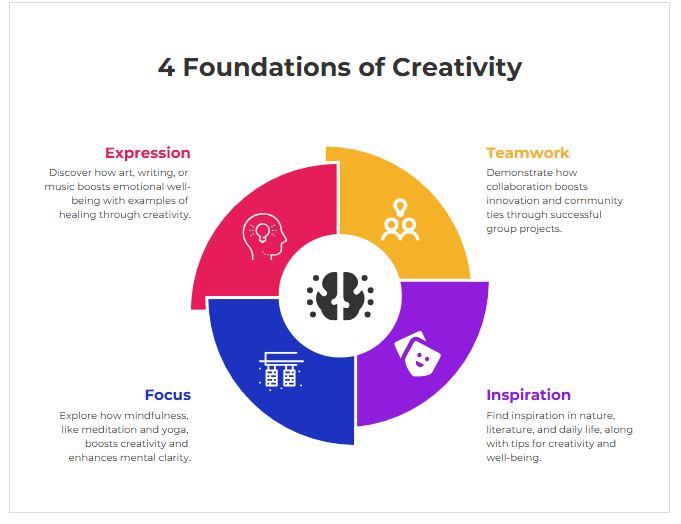Creativity and Mental Health: How Creative Expression Can Boost Well-Being
In today’s fast-paced world, it’s easy to get caught up in the daily grind—balancing work, relationships, and personal responsibilities. Amid all the busyness, one aspect of life often overlooked is our mental health. Yet, our mental well-being affects how we think, feel, and navigate the world. Thankfully, one powerful and accessible tool for improving mental health is something many of us already engage with in some form: creativity.
Whether it’s painting, writing, dancing, or simply daydreaming, creative expression has long been celebrated for its ability to heal, uplift, and inspire. This blog post will explore the profound connection between creativity and mental health and how tapping into our creative side can enhance our emotional health and well-being.

The Healing Power of Creativity
For centuries, creativity has been viewed not just as a form of artistic expression but as a way to process emotions reflect on experiences, and communicate our innermost thoughts. Creativity can offer a safe space to express what words sometimes can’t. This type of self-expression can help us understand our feelings and make sense of the world during moments of confusion or distress.
Understanding mental health with the help of professionals has long recognized the therapeutic potential of creative practices. Art therapy, music therapy, dance/movement therapy, and even drama therapy are established fields that use creativity to help people cope with a wide range of mental health challenges, from anxiety and depression to trauma and PTSD. But you don’t need to be an artist to benefit from creative activities—any form of creativity can serve as an emotional outlet, a stress reliever, and a mood booster.
1. Creativity as a Stress-Reliever
One of the most immediate benefits of engaging in creative activities is stress relief. When you’re absorbed in creating, whether it’s sketching, cooking, or playing an instrument, you’re often in a state of “flow”—a psychological state where you lose track of time and become fully immersed in the activity at hand. In this state, your mind is focused and present, which helps to reduce anxiety and stress.
Research has shown that creative activities can lower cortisol levels (the hormone associated with stress) and activate the brain’s reward centers, releasing dopamine and endorphins—the “feel-good” chemicals. So, when you channel your energy into something creative, your body responds by calming down and promoting relaxation.
2. Creativity and Emotional Expression
Creativity can provide an essential outlet for emotional release. Many people find it difficult to articulate their feelings, especially when they’re overwhelmed or struggling. Writing a poem, painting a picture, or dancing to music can help individuals release pent-up emotions in a way that feels safe and non-judgmental. In this sense, creative expression becomes an emotional release valve, allowing us to process feelings that might otherwise be difficult to confront.
For example, journaling is a popular tool for processing complex emotions. Putting thoughts on paper can be incredibly cathartic, and the act of writing can offer clarity or even reveal subconscious thoughts that may have been buried. Similarly, art allows individuals to visualize their emotions, creating a tangible representation of intangible feelings. The process of transforming emotions into something creative can offer a sense of control and understanding, which is empowering when dealing with difficult mental health issues.

3. Building Self-Esteem and Confidence
Engaging in creative activities can also help build self-esteem and confidence. When you create something, whether it’s a finished artwork, a completed project, or even a new recipe, you’re affirming your capability and reinforcing a sense of accomplishment. This is especially true when creativity is approached without the pressure of perfection. Creativity is not about making something flawless but about expressing yourself and enjoying the process.
For those dealing with self-doubt or feelings of inadequacy, completing a creative project can provide a tangible reminder of personal strength and resilience. It’s a reminder that you are capable of creating something meaningful, no matter how big or small.
4. Enhancing Problem-Solving Skills
Creativity isn’t just about making things; it’s also about thinking differently. The process of creating encourages flexibility and open-mindedness, which can enhance problem-solving skills. When you approach challenges creatively, you’re more likely to think outside the box and find innovative solutions. This ability to shift perspectives can be incredibly valuable, particularly when dealing with mental health issues such as anxiety, depression, or stress, where rigid thinking patterns can exacerbate negative emotions.
Additionally, creative activities often require focus and concentration, helping individuals push through mental blocks and frustrations. This can provide a sense of accomplishment and remind us that we have the power to overcome obstacles—both in our creative endeavors and in our lives.
5. Social Connection Through Creativity
Creativity can also foster social connection, which is crucial for mental well-being. Whether it’s joining a community art class, collaborating with others on a project, or simply sharing your work with friends, creative activities can provide opportunities for meaningful interaction. These connections allow us to share our experiences, receive feedback, and build supportive relationships.
The social aspect of creativity can help combat loneliness and isolation, which are often linked to depression and anxiety. When we feel seen and understood by others, it boosts our sense of belonging and reinforces our mental health. Whether through collaborative art projects, group performances, or even just casual conversations about creative pursuits, creativity nurtures connection and community.

How to Get Started with Creative Expression
If you’re new to creativity or looking for ways to integrate more creative activities into your life, here are a few simple suggestions:
- Try Journaling: Whether it’s for emotional processing, goal-setting, or just free writing, journaling is a low-pressure way to explore your thoughts and feelings.
- Explore Visual Arts: You don’t need to be a professional artist to enjoy painting, drawing, or sketching. Just pick up a pencil, paintbrush, or digital tool, and let your imagination run wild.
- Make Music: Playing an instrument or even humming along to your favorite songs can have an immediate impact on your mood. Don’t worry about being a virtuoso—just enjoy the music!
- Dance: Put on your favorite music and let your body move however it wants to. Dance is a great way to release built-up tension and improve your mental and physical health.
- Try Crafts: Knitting, pottery, woodworking, or any hands-on craft can provide a calming and focused experience. These tactile activities can ground you and offer a sense of achievement.
- Write Poetry or Stories: Whether it’s an abstract poem or a short story, writing can be a great tool for emotional release and creative exploration.
Remember, the goal isn’t to create something perfect—it’s to use creativity as a tool for self-expression, relaxation, and healing. Allow yourself to be free and playful in your creativity, without the pressure of achieving a specific outcome. Visit here to learn the tactics of self-acceptance.
Final Thoughts
Creativity is more than just an artistic pursuit; it’s a powerful tool for enhancing our mental health and emotional well-being. Whether you’re using creativity to express yourself, process your emotions, or find stress relief, there’s no limit to creative expression’s benefits. So, next time you’re feeling overwhelmed, stressed, or stuck, consider tapping into your creative side—it just might be the mental health boost you need.
Take a moment today to create something. No matter how small, allow yourself to experience the transformative power of creativity
I hope you found this blog post helpful! Creativity is a wonderful tool for improving mental health, and anyone can use it to their benefit. Whether it’s through art, music, or writing, creative expression provides a healthy outlet for our emotions. Furthermore a pathway to greater well-being.
